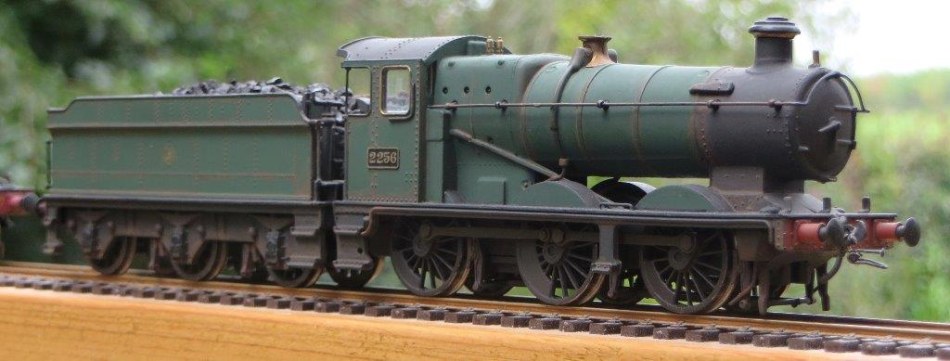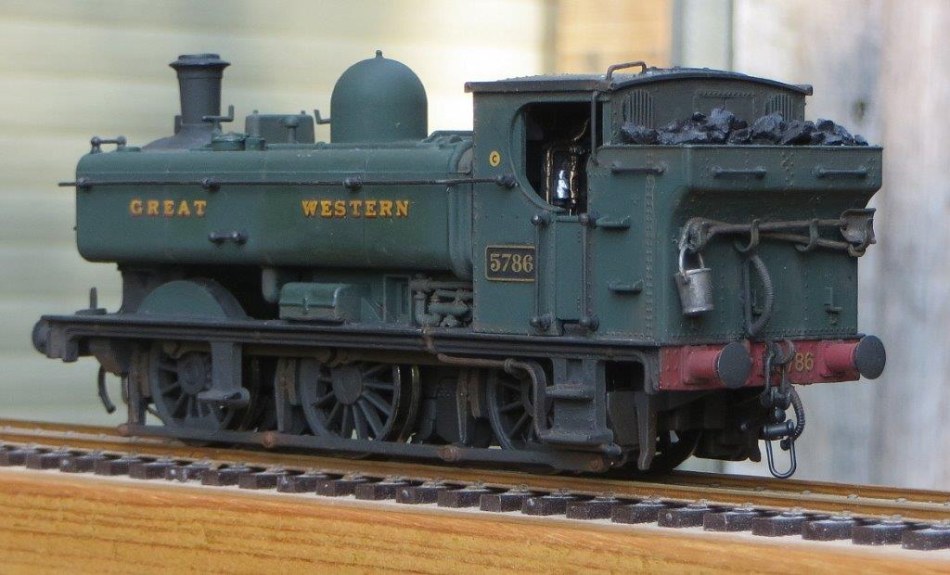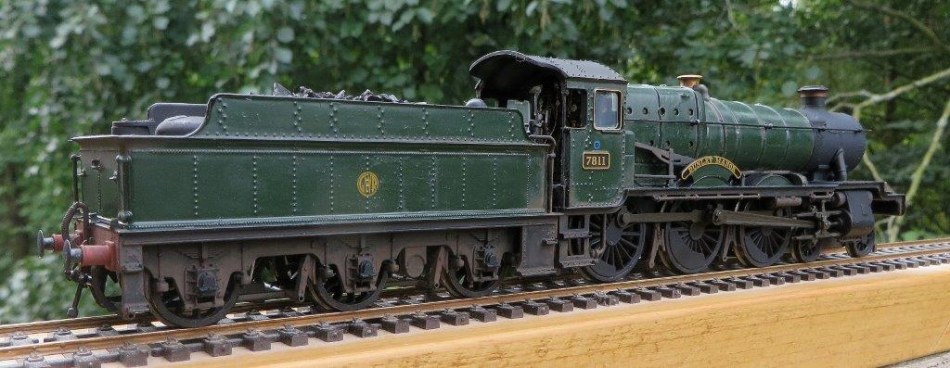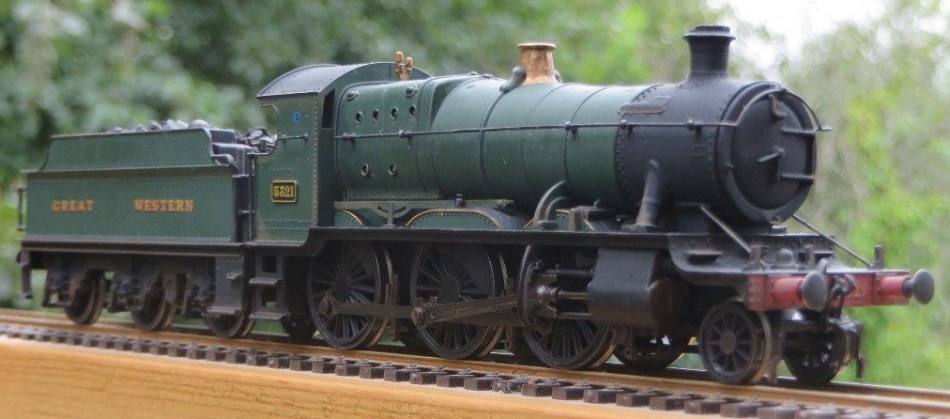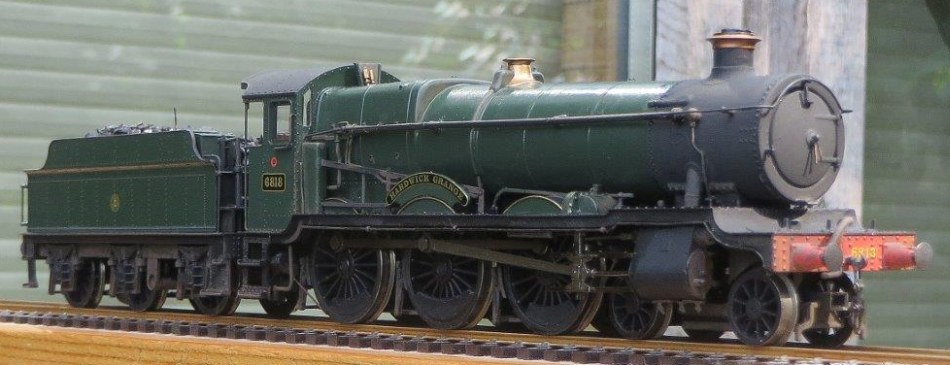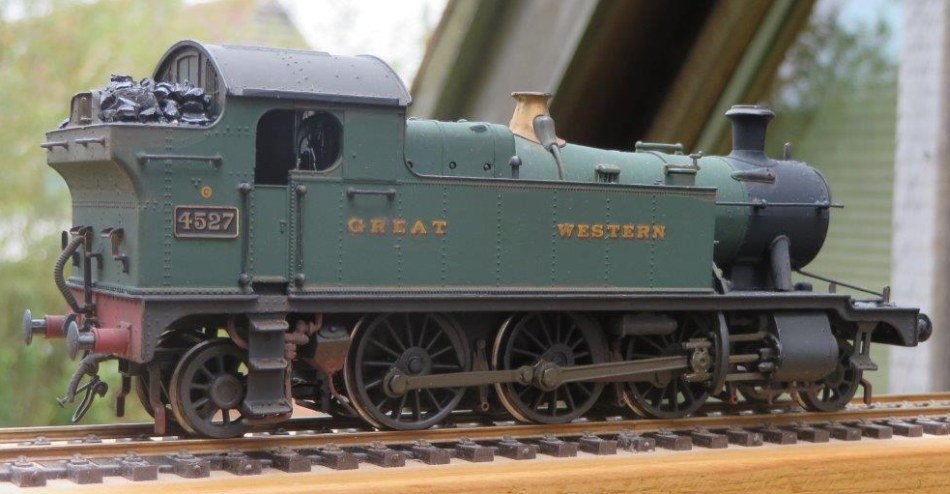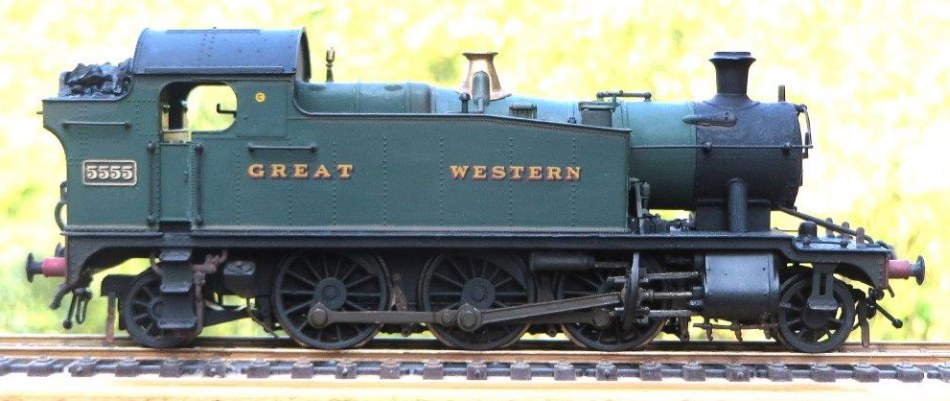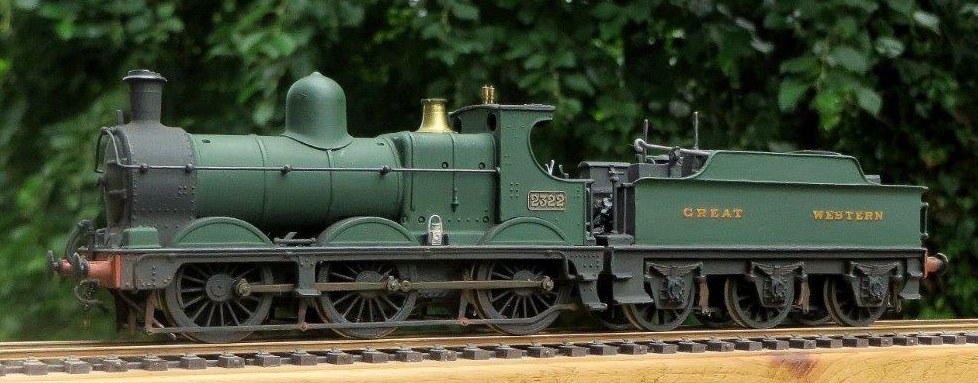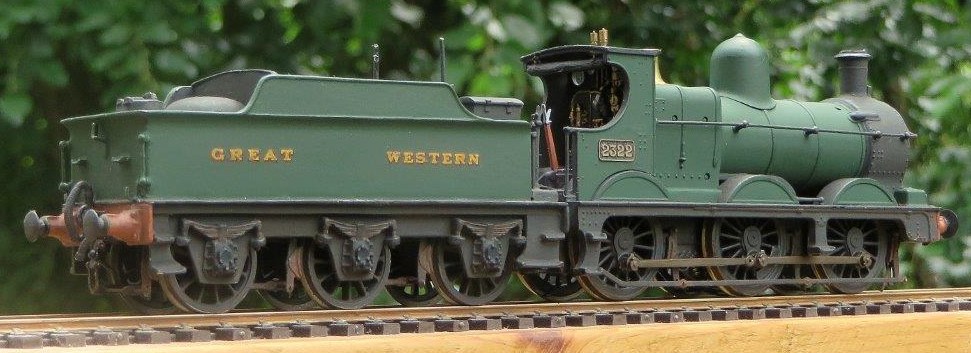| Section Page | Previous Page | Next Page |
Allan Howles' 4mm locos(Allan's rolling stock can be found here, and his layout is Kingsferry.) Allan writes: "I avoid airbrushing, believing good sable brushes of many grades provides a more realistic 'human' touch, if that makes sense. A lot of airbrushing in my view, especially pre-weathered RTR models, looks just that – airbrushed; as if they've just been through some sand dunes! But this is a very personal view, and really professional weathering can look amazing, but the heavy weathering one sees a lot really applies to post-war locos. All the locos are RTR and all have been modified and super-detailed. I do not spray paint any, neither do I use weathering powders. I refer to photographs in books and magazines; the rest being, in my view, common sense! The locos are first given a coat of matt or satin varnish depending, sometimes a mix of both, then enamel paints are used for the 'detail' dirt – mostly Railmatch 'frame dirt', Phoenix Precision 'dark rust', 'light rust' and 'rusty rail' colours, with Humbrol matt black and dark earth colours, most much thinned down to create a 'wash'. The 'workhorses', i.e. goods engines or tank engines, are naturally dirtier than others, apparent in the 1930s as much as post-war, from all the evidence I have. I think it's a myth that engines were cleaner then, although more effort went into more important locos."
The Dean Goods is a hybrid of a Hornby body on a Comet chassis, and 2500g Nu-cast tender. The loco chassis includes a Mashima motor, Comet gearbox, Markits (formerly Romford) wheels, and phosphor-bronze pickups. I always thought the larger Hornby 3000g tender looked out of proportion with this loco class, and most photographic evidence shows these locos with a smaller tender in my era. The body has been super-detailed to include vacuum and steam pipes, sand pipes, lamp brackets, spare lamp (Springside Models), brass grab rails to the footplate in lieu of the plastic ones, a rolled tarpaulin to the cab roof, and the interior controls picked out in various gold, silver, red and white paints. The brass number plates are by Modelmaster, 'Great Western' decals on the tender by HMRS, screw link couplings by Smiths. The Nu-cast tender is white metal with a nickel silver chassis and I think Romford wheels. Surprisingly I had to add my own grab rails, not included, both to the footplate and at the rear, using brass wire and knobs. Also steam and vacuum pipes were added, as were supports for the tarpaulin roof, and fire irons. Coal is by Geoscenics. Loco and tender are painted in Phoenix Precision paints including my favourite mix of Humbrol matt black and dark earth for the black parts including chassis and wheels, and Phoenix dark and light rust used where relevant. The green is varnished in Humbrol clear matt. Perhaps a little more weathering to the main body is still needed. |
| Section Page | Previous Page | Next Page |
